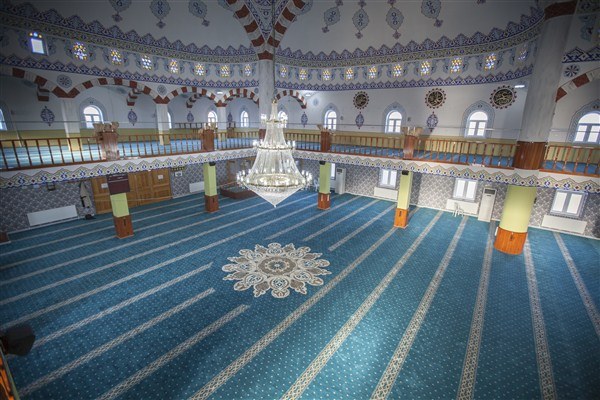Place to Buy Carpets & Rugs In Dubai

Textile Floor Covering
A carpet is a textile floor covering consisting of an upper layer of pile attached to a backing. The pile is generally either made from wool or fibers such as polypropylene, nylon or polyester and usually consists of twisted tufts which are often heat-treated to maintain their structure. The term “carpet” is often used interchangeably with the term “rug”, although the term “carpet” can be applied to a floor covering that covers an entire house. Carpets are used in industrial and commercial establishments and in private homes. Carpets are used for a variety of purposes, including insulating a person’s feet from a cold tile or concrete floor, making a room more comfortable as a place to sit on the floor (e.g., when playing with children) and adding decoration or colour to a room and also mosque carpet, wall to wall carpet, office carpet and office carpet tiles and home carpet dubai.
Woven Fabric
Carpets can be produced on a loom quite similar to woven fabric, made using needle felts, knotted by hand (in oriental rugs), made with their pile injected into a backing material (called tufting), flatwoven, made by hooking wool or cotton through the meshes of a sturdy fabric or embroidered. Carpet is commonly made in widths of 12 feet (3.7 m) and 15 feet (4.6 m) in the USA, 4 m and 5 m in Europe. Where necessary different widths can be seamed together with a seaming iron and seam tape (formerly it was sewn together) and it is fixed to a floor over a cushioned underlay (pad) using nails, tack strips (known in the UK as gripper rods), adhesives, or occasionally decorative metal stair rods, thus distinguishing it from rugs in Dubai , which are loose-laid floor coverings.
Etymology and usage of Carpets.
European Interiors
The term carpet comes from Old French carpite, from Old Italian carpita, “carpire” meaning to pluck.[1][2] The term “carpet” is often used interchangeably with the term “rug”. Some define a carpet as stretching from wall to wall.[3] Another definition treats rugs as of lower quality or of smaller size, with carpets quite often having finished ends. A third common definition is that a carpet is permanently fixed in place while a rug is simply laid out on the floor. Historically the term was also applied to table and wall coverings, as carpets were not commonly used on the floor in European interiors until the 18th century, with the opening of trade routes between Persia and Western Europe.
Here Are Some Types of Carpets
Woven for Carpets
The carpet is produced on a loom quite similar to woven fabric. The pile can be plush or Berber. Plush carpet is a cut pile and Berber carpet is a loop pile. There are new styles of carpet combining the two styles called cut and loop carpeting. Normally many colored yarns are used and this process is capable of producing intricate patterns from predetermined designs (although some limitations apply to certain weaving methods with regard to accuracy of pattern within the carpet). These carpets are usually the most expensive due to the relatively slow speed of the manufacturing process. These are very famous in India, Pakistan and Arabia.
Needle felt Carpets
These carpets are more technologically advanced. Needle felts are produced by intermingling and felting individual synthetic fibers using barbed and forked needles forming an extremely durable carpet. These carpets are normally found in commercial settings such as hotels and restaurants where there is frequent traffic.
Knotted
On a knotted pile carpet (formally, a supplementary weft cut-loop pile carpet), the structural weftthreads alternate with a supplementary weft that rises at right angles to the surface of the weave. This supplementary weft is attached to the warp by one of three knot types (see below), such as shag carpet which was popular in the 1970s, to form the pile or nap of the carpet. Knotting by hand is most prevalent in oriental rugs and carpets. Kashmir carpets are also hand-knotted.
Tufted
These are carpets that have their pile injected into a backing material, which is itself then bonded to a secondary backing made of a woven hessian weave or a man made alternative to provide stability. The pile is often sheared in order to achieve different textures. This is the most common method of manufacturing of domestic carpets for floor covering purposes in the world.
Others
A flatweave carpet is created by interlocking warp (vertical) and weft (horizontal) threads. Types of oriental flatwoven carpet include kilim, soumak,plain weave, and tapestry weave. Types of European flatwoven carpets include Venetian, Dutch, damask, list, haircloth, and ingrain (aka double cloth, two-ply, triple cloth, or three-ply).
A hooked rug is a simple type of rug handmade by pulling strips of cloth such as wool or cotton through the meshes of a sturdy fabric such as burlap. This type of rug is now generally made as ahandicraft.
Looking for Best Carpets & Rugs in Dubai and Abu Dhabi? Contact Us
Interiors,Décor works, Fit outs and Exteriors for Luxury Hotels!!
Call Now 056-600-9626
Twitter : https://twitter.com/hotelfurnitureu



Comments
Post a Comment